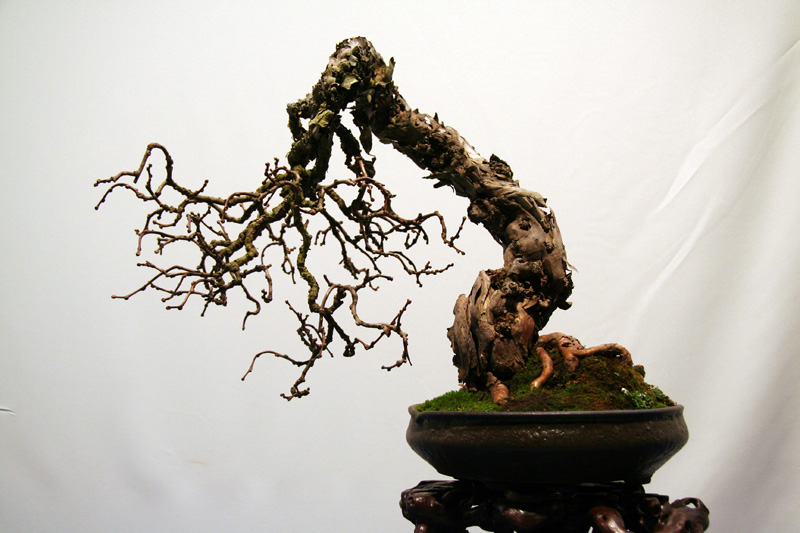Does anyone know if you are able to grow Lycee seeds from shop bought lychees? I don't have a clue if I can buy them anywhere here but they are one of the only other seeds I can think of that I could have a go at trying to grow. We also have a public gardens nearby with lots of succulents etc which I may take a look at.
Lychee, scientific name
Litchi chinensis, is a tree with fairly large leaves. It is in the soapberry family, Sapindaceae, which of all things includes genus Acer, the maples. The commercial culinary lychee comes from areas of China and adjacent Taiwan. This means it is a subtropical tree, with tolerance of freezing no greater than winter in low or middle elevation Taiwan. But the south of England is fairly mild. You might be able to grow it outdoors all winter. Leaves are quite large, shaped like a willow leaf, but as much as a foot long and 4 or more inches wide (33 cm x 10 cm). They do not reduce enough with bonsai techniques to make a convincing tree. They are evergreen, so a tree for winter viewing is not possible. For example, persimmon have large leaves, but they drop their leaves in autumn, and fruit continues to hang, making a very nice image, of a bare tree with fruit hanging. Lychee will not do that.
It seems you like the idea of growing fruiting trees for bonsai. Temperate trees can not be grown indoors year round, they require a cold rest every winter. So apples, cherries and others are not possible indoors. I really recommend Ficus. The culinary fig,
Ficus carica, requires full sun, but many other species of Ficus are used as house plants and do quite well indoors year round. All of them when healthy will fruit, and when fruit is ripe, the fruit of all Ficus species is edible. The non-culinary figs, like willow leaf figs, tiger bark fig, Benjamin fig, Ficus burt-davii, all have smaller fruit, usually orange when ripe, with flavor that varies from bland to sweet and "almost" tasty. Only Ficus carica, the culinary fig have really good tasting fruit, but all of the species have edible fruit when ripe and soft. Green fruit will have milky white latex, which is irritating to skin and tongue, do not sample fruit that is not soft ripe.
Another fruit that can be grown in a south window, is any of the genus
Eugenia, they have common names that usually are a variation on bush cherry or brush cherry, but they are not at all related to culinary cherries. They are members of the guava family. Essentially they are small leaf, small fruit versions of guavas. Actually, many members of the guava family can be grown as bonsai. Some need to be outdoors, some can be grown on the windowsill or under lights. Most Eugenia will do well under lights.
Natal plum,
Carissa macrocarpa is another good resident for the south window indoors. It also has edible fruit, that ripens to black, a little smaller than a culinary cherry.
The genus Malpighia has a couple of species proven to be good for bonsai, and they do reasonably well on the windowsill. They have fruit that is technically edible, though most do not consider them tasty. Malpighia emarginata, M glabra, and M coccigera are all used for bonsai. The "Singapore holly", M. coccigera is really nice, with small holly like leaves, white flowers, and orange fruit, but the fruit really is not quite up to "edible tastiness". Any nursery that specializes in houseplants should have one of these 3 species.
Citrus can be done in a south window. This includes kumquat, kumquat will tolerate slightly less sun than grapefruit or oranges. It takes heat, warm humid days to ripen oranges, lemons, limes & grapefruit. Kumquat do not need as much heat and sun, though they are considered a full sun plant. Yuzu is a cold tolerant Japanese variety of citrus, winter hardy probably through USDA zone 8. Which probably would be hardy in the south of UK. The Ichang papeda is a similar, cold hardy version of citrus that was developed in China. There are other citrus worth exploring. The finger lime of Australia has small leaves and small fruit, making bonsai an easier task. An interesting read is the List of Citrus species on Wikipedia. The calamondin orange and the myrtle leaf orange are popular houseplants. Read the pages linked to the citrus list and you will be a Wiki expert in what is known about citrus. (I'm not knocking wikipedia, in the case of plant information, often it proves to be an excellent and reliable source of information). (I would not practice medicine based on what is in Wikipedia, but often the info is fair to good).

en.wikipedia.org
There are many more, spend time reading about various tropical fruits. Look into the South African species of genus Diospyros, some have small leaves and small fruit, miniature persimmons. Diospyros rhombifolia is the Chinese princess persimmon, a delightful species for bonsai with modest size leaves and small fruit.
So read up. Wikipedia is your friend. Look at sun requirements and temperature requirements. Species from areas where winter is mostly frost free are better for indoors. Shade loving species are better for indoors.
And look into modern LED lighting systems. The LED lights will greatly expand what you can grow indoors.

time.com

